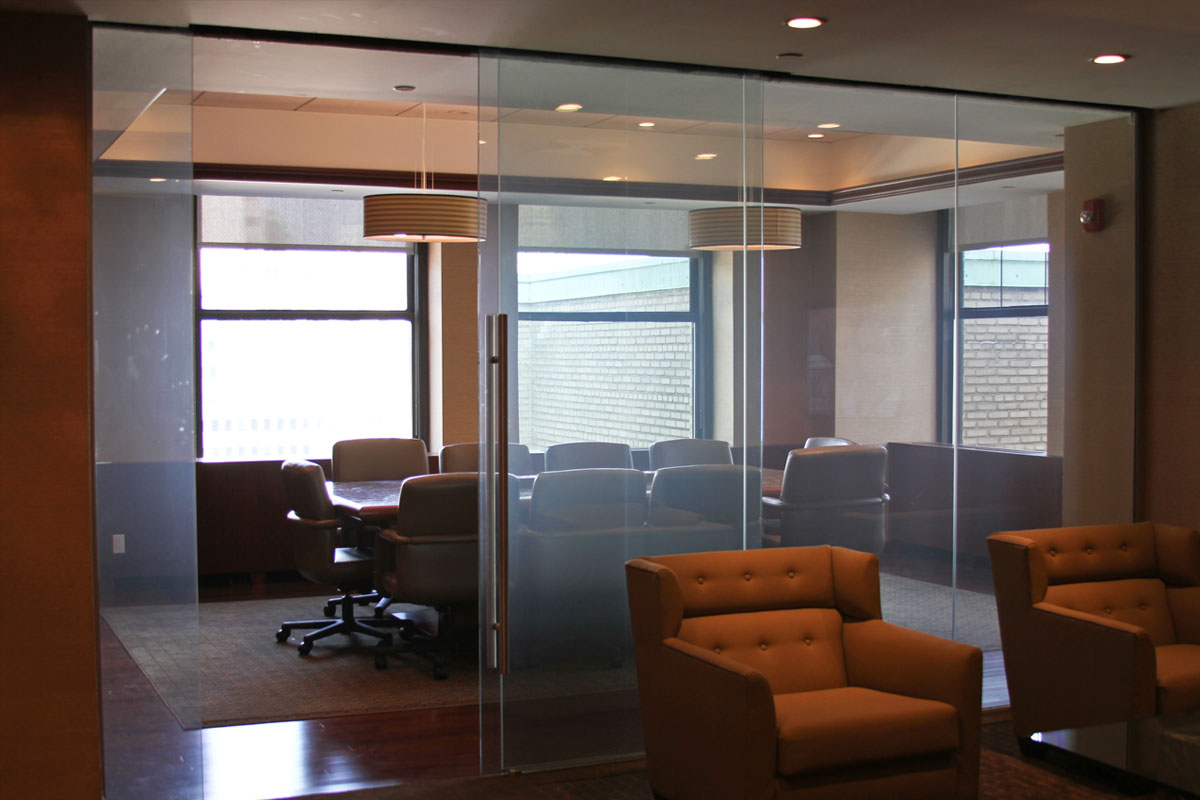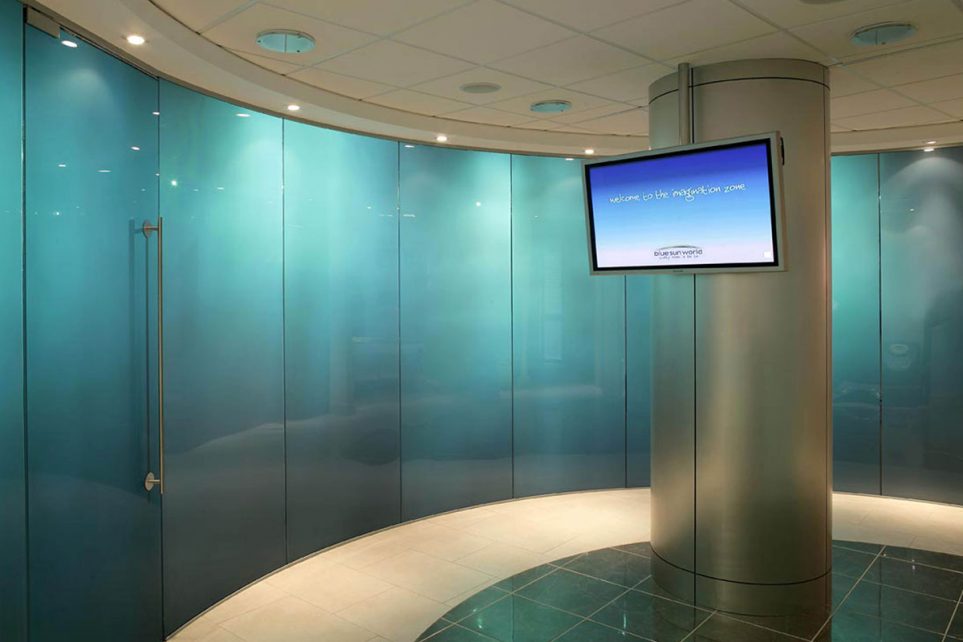Now you see through it. Now you don’t. Like magic, smart glass transforms from transparent to translucent at the flick of a switch. Redefining a building’s ability to control privacy, light, sun, and glare, as well as energy efficiency, smart glass is opening up exciting new frontiers for architects and designers.
So, just what is smart glass? The science behind the magic involves glazing that alters the properties of glass when electricity, light or heat is applied. The technology is evolving every day and is currently viable in several different forms.
- Electrochromic technology involves the interaction between electricity and liquid crystals. When electricity is applied, the crystals disperse, and the glass becomes transparent. When the electricity is cut off, the crystals come to rest in a translucent milky white state. Critics complain it requires a continuous electrical current to maintain its transparency.
- Thermochromic glass windows also adjust for tint or transparency, but the changes are driven by temperature instead of an electrical current.
- Photochromic windows react to light using technology similar to that of those cool eyeglasses that alter the tint based on the available level of brightness.
Smart glass windows for commercial office buildings and universities are beginning to become a fixture on the architectural landscape. The technology is especially popular in hospitals where it has revolutionized the concepts of privacy and hygiene. With the flick of a switch, patients can maintain their dignity away from prying eyes.

Conversely, medical professionals can easily reverse the process and observe patient progress without danger of contagion. Smart glass also eliminates the need for curtains that require constant maintenance and can easily harbor and transmit bacteria. Ideal for exam and patient rooms, as well as operating theaters, smart glass is maximizing satisfaction and comfort for both patients and staff.
Residential customers are just beginning to scratch the surface of smart glass potential. Besides being used in place of curtains or blinds, architectural smart glass products include glass offers innovative interior partitions that maintain the feeling of wide open architecture when you want it and provide privacy when you need it. Beyond aesthetics, as smart glass controls the amount of light that enters a room, the benefit will be reflected in decreased energy bills.

As with all new tech, there are a few kinks to be worked out. For example, while this glass may be smart, it’s definitely not cheap and it’s still to be determined how well the materials will hold up over time. Additionally, there is the issue of how long it takes for the windows to transition between clear and opaque.
By way of addressing these challenges, smart glass scientists are already developing very thin coatings that could be retro-fitted to existing windows, thereby drastically cutting the cost of the process. From there, it’s a short leap to the future they envision, wherein electrochromic windows double as solar panels and provide energy.
It’s clear we’ve only begun to see just how smart glass can be!

